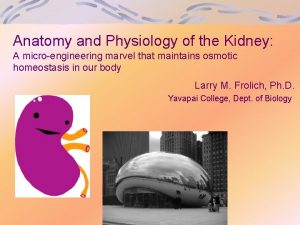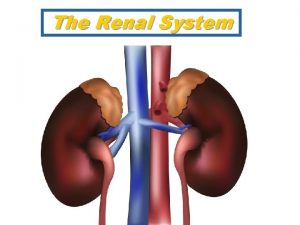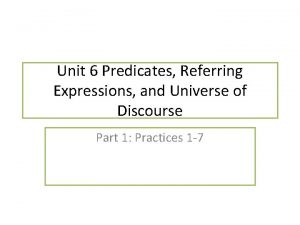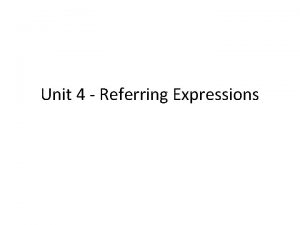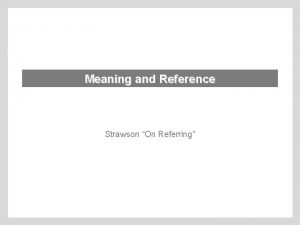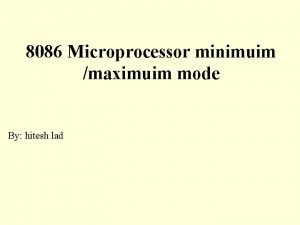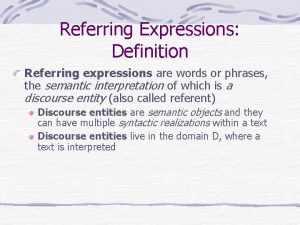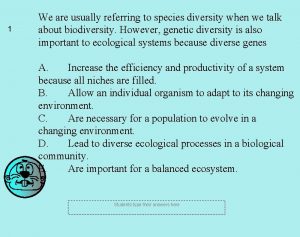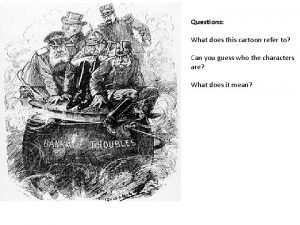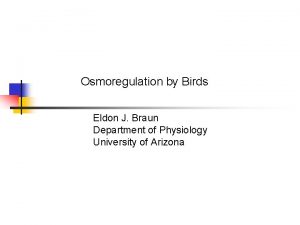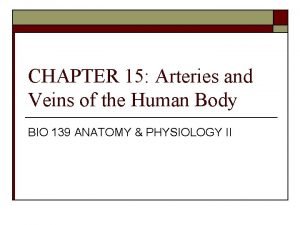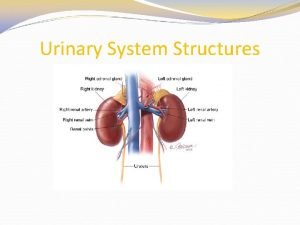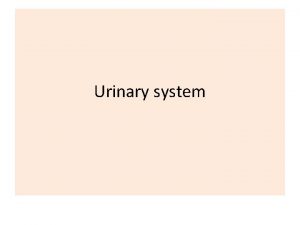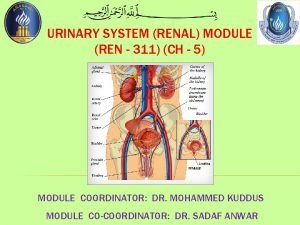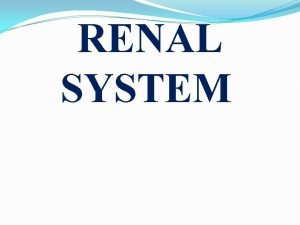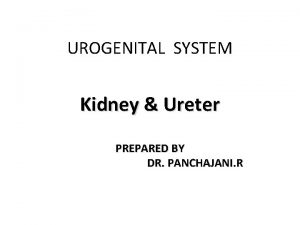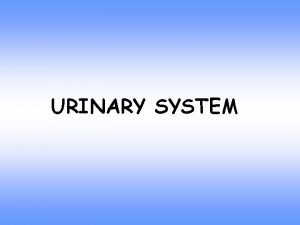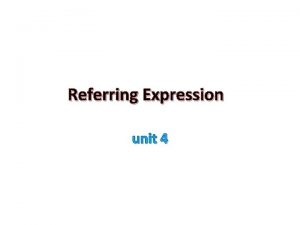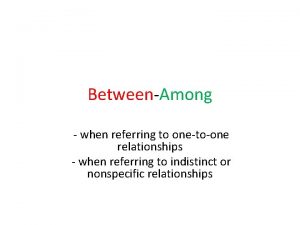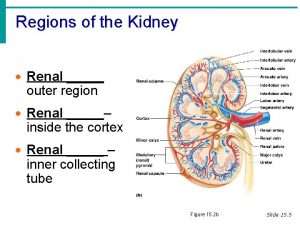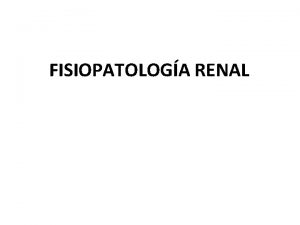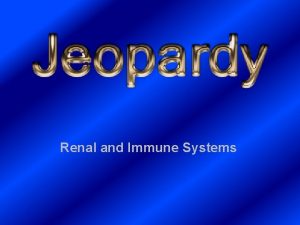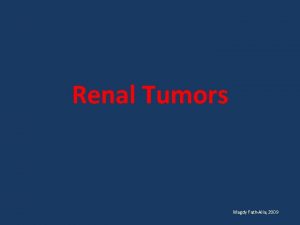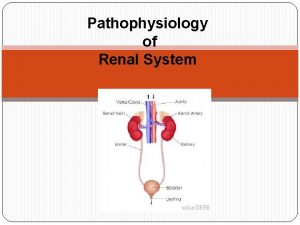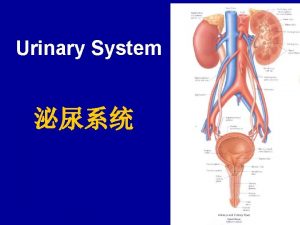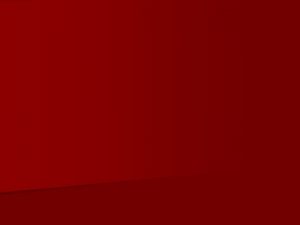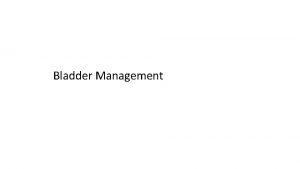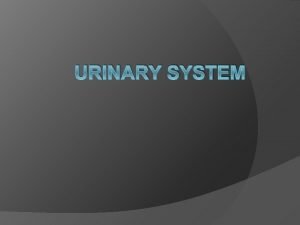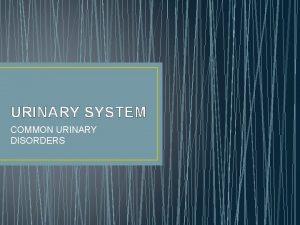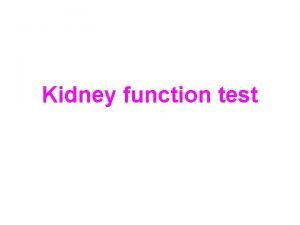Renal System Role of Kidney renal system referring




























- Slides: 28

Renal System

Role of Kidney renal system – referring to the kidney 1. 2. 3. 4. 5. blood filtration waste excretion acid / base balance blood pressure regulation hormone secretion

Kidney Blood Flow Blood enters the kidney through the renal artery. renal arteries stem from the: Filtered blood exits the kidney through the renal veins flow into the:

Kidney Blood Flow

Blood and the Nephron Renal artery blood is filtered through nephrons. About a million nephrons make up the kidney. Nephrons collect liquid to be excreted. Fluids are exchanged between the nephron before blood is returned to renal vein.

Blood Flow The renal artery is split into afferent arterioles. blood brought to glomerulus (a capillary bed) blood leaves through the efferent arterioles no veins involved Efferent arterioles are the beginning of a network of peritubular capillaries, that wrap around the nephron.

Glomerulus and Bowman’s Capsule

Nephron

Nephrons begin surrounding the glomerulus with the Bowman’s capsule structure. What is the pathway taken by the waste solution once it is collected by the Bowman’s capsule?

Kidney Structure renal cortex – outside of kidney; location of Bowman’s capsule renal medulla – middle of kidney; location of loop of Henle renal pelvis – location of the ends of collecting ducts

Urine Flow Urine leaves the renal pelvis through the ureters and travels to the bladder. Fluid leaves the body through the urethra.

Urinary Tract

Nephron Structure efferent arteriole proximal tubule glomerulus Bowman’s capsule distal tubule collucting duct afferent arteriole Loop of Henle

Urinary System aorta inferior vena cava renal cortex renal medulla renal artery renal vein kidney ureter bladder urethra renal pelvis nephrons ureter

Urine Formation

Three Functions of Urine Formation 1. filtration – 2. reabsorption – 3. secretion –

Filtration Nutrients move from glomerulus into Bowman’s capsule due to high blood pressure (65 mm Hg; normal ~ 25 mm Hg)

Nutrient Flow Solute Glomerulus Bowman’s Capsule? water yes Na. Cl yes H+ ions yes amino acids yes glucose yes plasma proteins no red blood cells (erythrocytes) no platelets no

Reabsorption saves us from having to continuously replenish our body with fluid. 20% of fluid flowing into kidney is filtered into nephrons less than 1% of nephron fluid is used to make urine

Reabsorption vs. Secretion Reabsorption protein transporters move nutrients molecules from nephron into the blood Secretion protein transporters move wastes from blood to nephron

1. Bowman’s Capsule water and dissolved solutes leave glomerulus; enter Bowman’s capsule water Na+ H+ Clglucose amino acids vitamins minerals urea uric acid

2. Proximal Tubule selective reabsorption of nutrients (need transporters) p. H determined by HCO 3 reabsorption and H+ secretion HCO 3 -, K+ Na+, Cl. H 2 O amino acids glucose vitamins H+ NH 3

3. Loop of Henle – Descending Limb only permeable to H 2 O (osmosis) impermeable to salt fluids in tube are being concentrated H 2 O

4. Loop of Henle – Ascending Limb only permeable to salt (need ionic transporters) impermeable to water Na. Cl

5. Distal Tubule HCO 3 Na+, Cl. H 2 O selective reabsorption of nutrients (need transporters) p. H determined by HCO 3 reabsorption and H+ secretion H+ NH 3 K+

6. Collecting Duct urine formation by concentration nephron fluid any urea and urine that is reabsorbed is less than that was filtered into nephron Na. Cl urea water


Kidney Stones crystallization of some urine solutes a 2 – 3 mm stone can obstruct flow to the ureter Treatment: increased water consumption surgery
 Ira pré renal renal e pós renal
Ira pré renal renal e pós renal Ira pré renal renal e pós renal
Ira pré renal renal e pós renal Inside a kidney the ureter expands as a renal pyramid
Inside a kidney the ureter expands as a renal pyramid Peritubular capillaries and vasa recta difference
Peritubular capillaries and vasa recta difference Web role in azure
Web role in azure Lothar krappmann
Lothar krappmann Statuses and their related roles determine
Statuses and their related roles determine Urinary system diagram
Urinary system diagram Referring expression
Referring expression Referring expression example
Referring expression example On referring strawson
On referring strawson Contextual reference examples
Contextual reference examples Referring expression
Referring expression What kind of “trouble” (line 9) was hitesh referring to
What kind of “trouble” (line 9) was hitesh referring to Referring others
Referring others Referring expression definition
Referring expression definition The high rate of poaching of rhinoceros is due mostly to
The high rate of poaching of rhinoceros is due mostly to 6 principles of cognitive and metacognitive factors
6 principles of cognitive and metacognitive factors The daffodils analysis
The daffodils analysis Proclaiming and referring tones
Proclaiming and referring tones The first cartoons
The first cartoons Renal portal system
Renal portal system Renal portal system
Renal portal system Figure 15-3 is a diagram of the nephron
Figure 15-3 is a diagram of the nephron Proximal convoluted tubule histology
Proximal convoluted tubule histology Renal system
Renal system Renal system
Renal system Renal angle
Renal angle Cortical region of kidney
Cortical region of kidney


